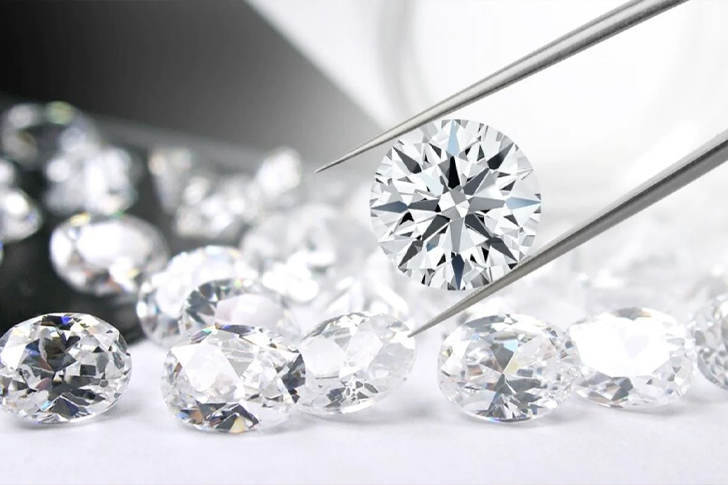Sustainable Alternatives: The Rise of Lab-Grown Diamonds in Jewelry Industry
As concerns over environmental sustainability and ethical sourcing continue to grow, the jewelry industry is witnessing a significant shift. Among the most notable changes is the rise of lab-grown diamonds—a sector that is not only addressing these concerns but also reshaping the market dynamics of precious stones. Lab-grown diamonds offer a compelling alternative by providing not only ethical and sustainable benefits but also price advantages.

The Environmental Impact of Traditional Diamond Mining
Mining diamonds is an intensive process with far-reaching environmental consequences. Traditional diamond mining often results in vast open-pit mines or seabed dredging, both of which lead to significant habitat destruction. According to the World Wildlife Fund, diamond mining has caused soil erosion, deforestation, and ecosystem disruption. For instance, in countries like Angola and the Democratic Republic of Congo, diamond mining has drastically altered landscapes and ecosystems.
What Are Lab-Grown Diamonds?
Lab-grown diamonds are genuine carbon diamonds produced under controlled conditions in laboratories. Using technologies such as High Pressure High Temperature (HPHT) or Chemical Vapor Deposition (CVD), these diamonds are developed from a carbon seed, mimicking the natural growth process that occurs over billions of years beneath the Earth’s surface. The result is a stone that is chemically, physically, and optically identical to its mined counterpart.
Sustainability and Ethical Assurance
One of the most compelling reasons for the rise of lab-grown diamonds in the jewelry industry is their reduced environmental impact. The creation of a lab-grown diamond uses considerably less water and produces fewer carbon emissions compared to mining. A report by Frost & Sullivan suggests that mined diamonds generate more than 125 pounds of carbon per carat, while lab-grown diamonds produce only 6 pounds of carbon per carat. Furthermore, lab-grown diamonds eliminate the need for disrupting ecosystems through mining activities.
In regards to ethical considerations, lab-grown diamonds ensure a conflict-free origin. The processes involved are completely traceable, and since they are produced in controlled environments, they do not finance war, child labor, or other human rights issues often associated with the controversy of conflict diamonds or “blood diamonds” from war-torn regions.
Cost Effectiveness
Another factor influencing the rise of lab-grown diamonds is their cost-effectiveness. Lab-grown diamonds typically cost 30-40% less than mined diamonds. This price difference arises from the shorter supply chain and lower production costs. Consumers are increasingly drawn to the idea that they can purchase a larger, similarly quality diamond at a fraction of the cost, making luxury more accessible.
Market Growth and Consumer Perception
The market for lab-grown diamonds has been growing at an exponential rate. According to a report by Allied Market Research, the global lab-grown diamonds market was valued at $19.3 billion in 2020 and is projected to reach $49.9 billion by 2030. This surge is indicative of a broader acceptance within the market, reflecting changing consumer attitudes.
A consumer survey by MVI Marketing found that nearly 70% of millennials are considering purchasing a lab-grown diamond for their engagement rings. The shift in perception can be attributed to a growing awareness of the environmental issues associated with traditional diamond mining, as well as a general trend towards more sustainable consumption practices.
Challenges and the Future
Despite the promising growth, the lab-grown diamond industry faces challenges, particularly from the natural diamond industry and perceptions of authenticity. Traditionalists argue that lab-grown diamonds, despite their identical properties, lack the romance and rarity of earth-mined diamonds. Furthermore, there’s ongoing debate about the resale value of lab-grown diamonds, which currently is notably lower than that of natural diamonds. However, as production technologies improve and consumer attitudes continue to evolve, the gap between the perceptions of lab-grown and mined diamonds is expected to diminish.
Looking into the future, advancements in the production of lab-grown diamonds are likely to make them even more environmentally friendly and cost-effective. Researchers are continuously exploring new methods to enhance efficiency and further reduce environmental impacts. With ongoing technological improvements and shifting consumer preferences, lab-grown diamonds are set to become an integral part of the jewelry industry’s more sustainable future.
In conclusion, the rise of lab-grown diamonds represents not just a shift in manufacturing techniques but a broader cultural shift towards sustainability and ethical consumption. As this industry continues to grow, it is reshaping consumer expectations and the traditional diamond market, paving the way for a future where luxury and responsibility go hand in hand.







Recent Comments